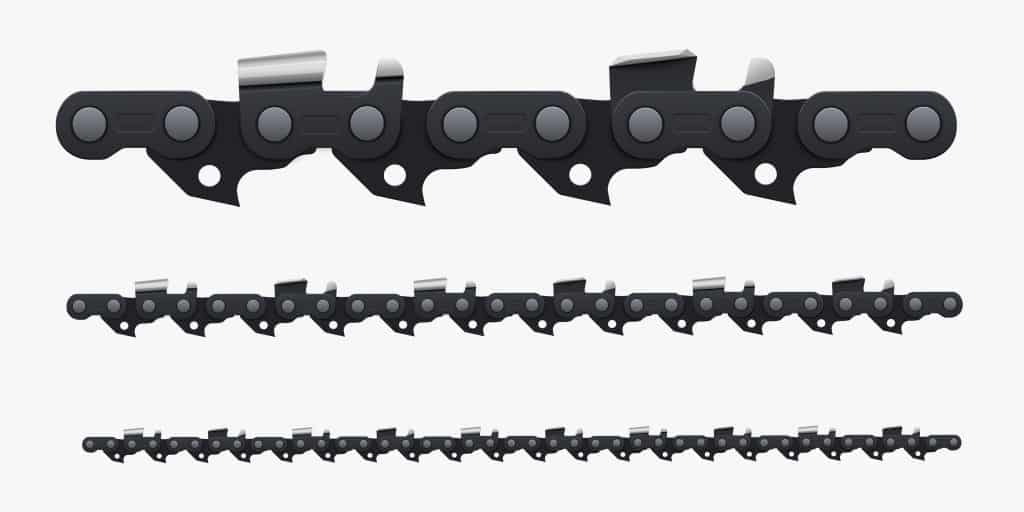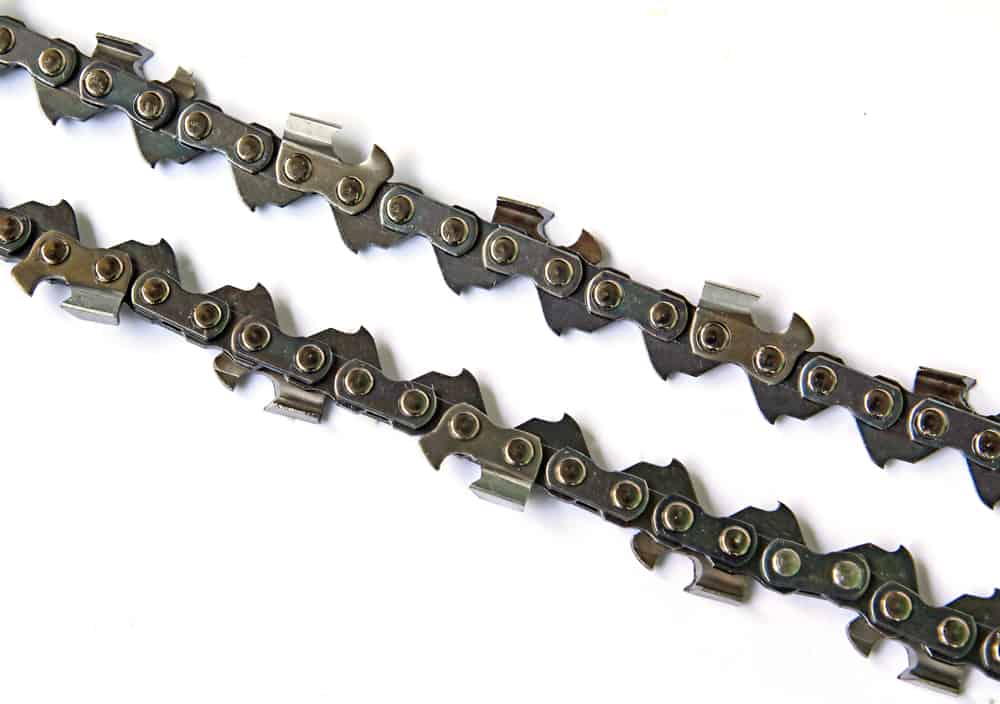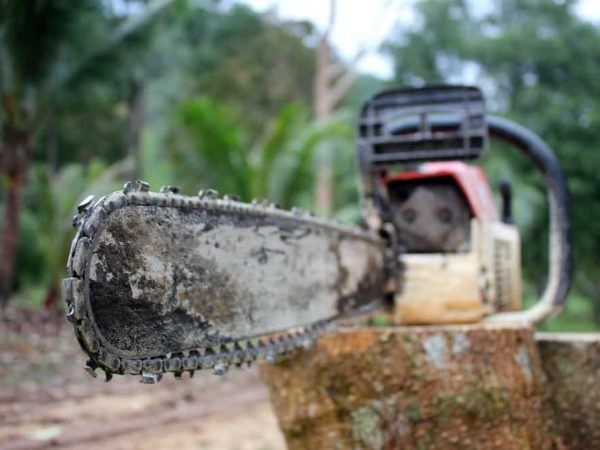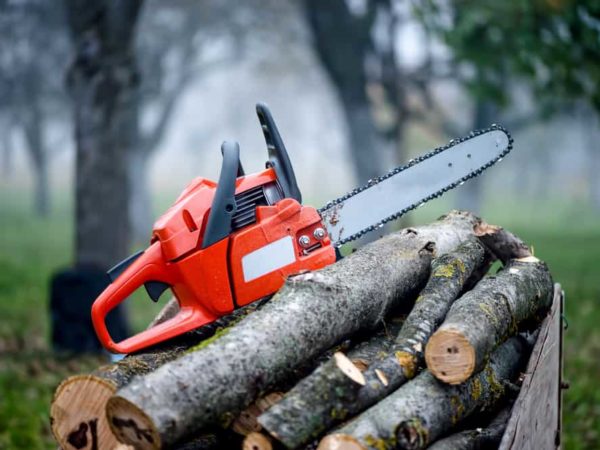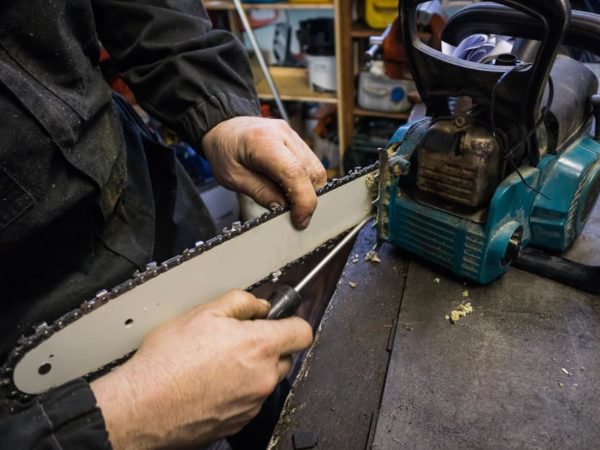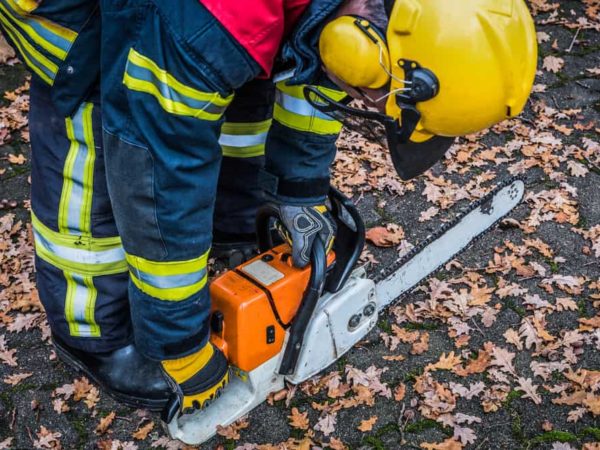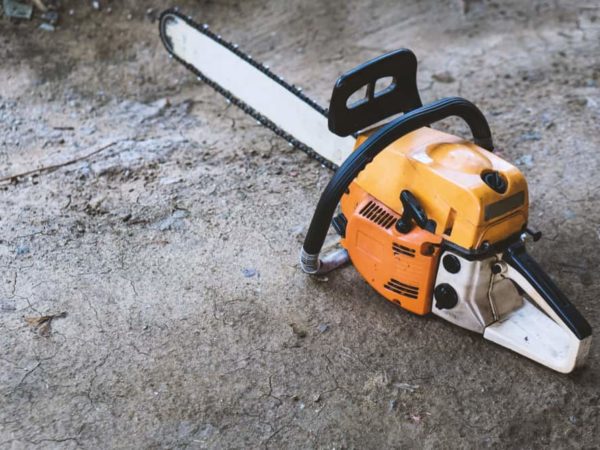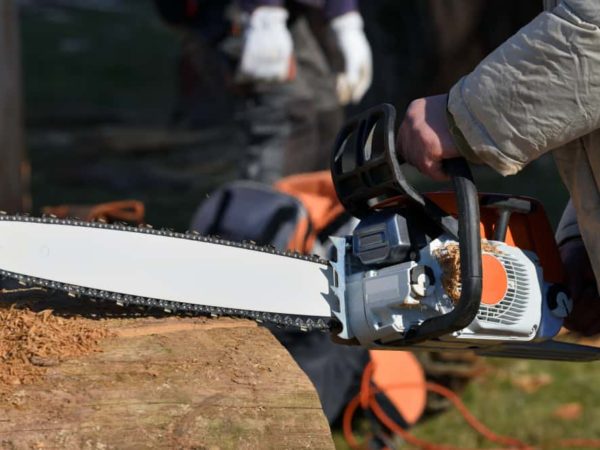For those more unfamiliar with chainsaws, one chain might seem like any other. However, there are many different types designed for different uses, and every chainsaw requires a chain that is compatible.
Here we look at some of the most common chainsaw chain types to give you an idea of which is most suitable for the jobs you need to do. We will also give you the basic information you need to know when it comes to buying a replacement chain for your chainsaw.
Here is a short and very clear video explaining some of the basic concepts we’re going to be talking about.
Table of Contents
Types of teeth
One of the main distinctions between the different types of chainsaw chain concerns the cutting teeth. While other specialist types exist, these are the four you will most commonly come across.
-
Full-chisel cutters
Full-chisel cutters are square-cornered. This makes them more aggressive and enables them to cut faster than other types of chain.
However, because of the square shape, they will dull much faster than other types of chain when used to cut in more challenging, dirty conditions and will need to be sharpened much more often. They are also the most difficult type to sharpen due to their shape.
Chains with full-chisel cutters have a higher risk of kickback then other types of chain since the square-shaped teeth are more likely to “bite” into the wood.
Because of this extra aggressiveness and higher risk factor, full-chisel chains are more likely to be used by chainsaw professionals and are less suitable for inexperienced home users.
-
Semi-chisel cutter
Semi-chisels cutters are rounded, which means they stay sharper for longer. They are better employed when cutting tougher, more challenging wood or in dirty conditions that may blunt the blades faster.
The rounded shape also helps reduce the risk of kickback, meaning these chains are suitable for home use. They are also commonly used for semi-professional and professional applications.
The drawback to using a semi-chisel chain is that it won’t cut as fast as a full-chisel version, meaning the work will take longer – but at the same time, since they hold their sharpness better, you will spend less time sharpening them.
The result is that a semi-chisel chain will allow you to work faster when cutting in dirty conditions even though they cut more slowly than full-chisel chains because you won’t need to stop to sharpen them so often.
-
Micro-chisel chains
Another common option is a micro-chisel chain. These are similar to semi-chisel chains but have even smaller rounded corners. These chains are forgiving of dirty conditions and provide a clean, smooth cut. They are also relatively easy to sharpen.
-
Low-profile cutter
Low-profile cutters are the safest and most forgiving types of chain, making them the most popular choice for home users.
They are rounded like semi-chisel cutters and are also easiest to sharpen – again, making them ideal for the casual user.
Chain arrangements
The other way of categorizing types of chainsaw chain is by the chain arrangement. Here, we introduce the main types. If you want to see the different chain arrangements as well as the different cutter types, here’s a video that goes into a bit more depth.
-
Full complement chain
This is the standard type of chainsaw chain configuration. It consists of a left cutter, a drive link, a right cutter, a drive link, a left cutter and so on.
This is the best kind of chain for general work, and this is the type that will come supplied with any home-use chainsaw you buy unless otherwise stated, including gas-powered chainsaws, electric corded chainsaws, and battery powered chainsaws.
These chains are suitable for all kinds of cutting work and function well with chains of anything up to around 24”.
-
Skip chain
A skip chain has two drive links in between each cutter instead of just one, so the configuration will be left cutter, drive link, drive link, right cutter, etc. This results in a chain that has 1/3 fewer cutting teeth than a standard full complement chain.
These kinds of chain are used on chainsaws with longer bars, usually over 24”, because turning a full complement chain of this length requires more power from the chainsaw engine.
Since bars and chains of this length are unusual in home-use chainsaws, you are unlikely to need one unless you are using a professional grade chainsaw for large-scale, heavy-duty cutting work.
-
Semi-skip chain
A semi-skip chain is a hybrid between a full complement chain and a skip chain, and it alternates between having a cutting tooth every drive link and every two drive links. This is a specialist option that could be used with a long bar but when extra cutting capacity is required.
Other measurements
As well as the type of cutting teeth and the chain configuration, there are a couple of other measurements you need to be aware of: the pitch and the gauge. It is important to know the correct specifications when buying a new chain for your saw.
-
Pitch
The pitch is determined by measuring the distance between any three consecutive rivulets on the chain – these are the studs that hold the chain together.
To work out the pitch, measure from the center of the first rivulet to the center of the third rivulet along and then divide by two. The most common chain pitches are 3/8” or 0.325”.
You can normally find the pitch stamped on the chainsaw bar – make sure you buy a chain that matches the pitch specified on the bar.
-
Gauge
Gauge refers to the size of the groove in the bar the chain fits into. To work it out, you can use a special trick – all you need is a quarter, a penny and a dime.
To determine the gauge, clean out the groove on your chainsaw bar of any gunk or debris and try to push the coins in to see which fits most snuggly.
- If the quarter fits best, the gauge is 0.063
- If the penny fits best, the gauge is 0.058
- If the dime fits best, the gauge is 0.050
Make sure you always choose a chain with the correct gauge for your bar or it won’t run properly. You can usually also find the gauge printed on the bar alongside the pitch.
Many types of chains for many different uses
As you can see, there is a wide range of chainsaw types with different styles of cutting teeth as well as various possible configurations. The key is understanding which type is best for which kind of job – and of course, always ensuring you buy a chain that is compatible with your chainsaw and bar.
Don’t forget to pin it!



